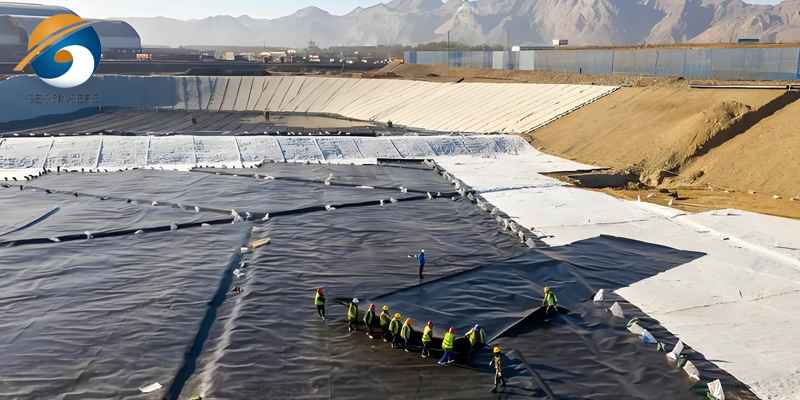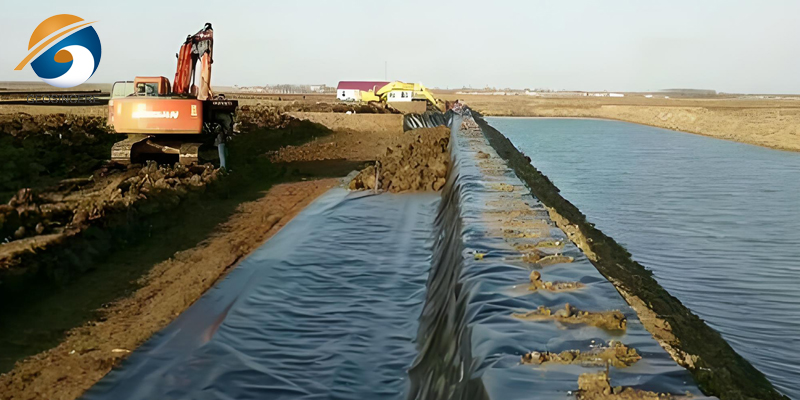What Is A 30 Mil HDPE Liner and What Are Its Application Fields?
30 mil HDPE liner is a robust and versatile geomembrane made from high-density polyethylene, known for its exceptional durability and resistance to chemicals, UV rays, and environmental stress. With a thickness of 30 mils (approximately 0.75 mm), this liner serves as a reliable barrier in a variety of applications. As we delve deeper into its diverse applications, you’ll discover how this material is transforming industries by providing effective solutions for water management, waste containment, and environmental protection. Let’s explore the significant roles that 30 mil HDPE liners play across different sectors and understand why they are increasingly becoming the go-to choice for engineers and environmental professionals.
1. What Is A 30 Mil HDPE Liner and Its Basic Characteristics?
A 30 mil HDPE liner is a geomembrane made from high-density polyethylene (HDPE) that has a thickness of 30 mils, or about 0.75 mm. This type of liner is widely used in various applications due to its strength and durability. Here are some basic characteristics of a 30 mil HDPE liner:
1.1 Durability: HDPE liners are resistant to punctures, tears, and impacts, making them suitable for demanding environments.
1.2 Chemical Resistance: They offer excellent resistance to a wide range of chemicals, including acids, bases, and solvents, ensuring long-term performance in diverse applications.
1.3 UV Resistance: HDPE liners can be treated for UV stabilization, allowing them to withstand prolonged exposure to sunlight without significant degradation.
1.4 Flexibility: Despite their strength, 30 mil HDPE liners maintain a degree of flexibility, enabling easy installation on uneven surfaces.
1.5 Waterproofing: These liners provide an effective barrier against water infiltration, making them ideal for containment applications.
1.6 Low Permeability: HDPE has low permeability, which helps prevent the migration of contaminants into surrounding soil and groundwater.
1.7 Cost-Effectiveness: While the initial investment may be higher than some alternatives, the longevity and reduced maintenance needs often make HDPE liners a cost-effective solution over time.
2. Which Industries Commonly Use 30 Mil HDPE Liners?
2.1 Waste Management: Used in landfill liners and caps to prevent leachate from contaminating soil and groundwater, ensuring safe disposal of waste materials.
2.2 Agriculture: Employed in irrigation ponds, agricultural reservoirs, and fish farming to retain water and prevent contamination from chemicals and fertilizers.
2.3 Mining: Utilized in tailings ponds and heap leach pads to contain water and prevent the escape of hazardous materials during mining operations.
2.4 Industrial Applications: Used to line storage tanks, containment areas, and secondary containment systems for chemicals and hazardous materials to prevent spills and leaks.
2.5 Environmental Remediation: Applied in environmental protection projects to contain contaminated soils and manage stormwater runoff, aiding in the cleanup of polluted sites.
2.6 Construction: Used in various construction applications, including retaining walls and water features, to provide waterproofing and soil stabilization.
2.7 Aquaculture: Employed in fish ponds and aquaculture facilities to maintain water quality and prevent the escape of aquatic species.
3. How to Correctly Install and Maintain a 30 Mil HDPE Liner?
Installation Steps
Site Preparation:
- Clear the installation area of debris, sharp objects, and vegetation.
- Grade the soil to create a smooth, even surface, minimizing the risk of punctures.
Subgrade Inspection:
- Inspect the subgrade for stability and uniformity. Address any soft spots or uneven areas before proceeding.
Geotextile Layer (Optional):
- Consider laying a protective geotextile fabric over the subgrade for added protection against punctures.
Unrolling the Liner:
- Carefully unroll the 30 mil HDPE liner across the prepared area, avoiding wrinkles and folds. Ensure proper alignment.
Securing the Liner:
- Anchor the liner at the edges using soil, gravel, or concrete to prevent movement during installation.
- Overlap seams by at least 12 inches (30 cm) to ensure a secure bond.
Seaming:
- Use thermal welding or extrusion welding techniques to securely bond the seams. Follow manufacturer guidelines for temperature and pressure settings.
Testing:
- Conduct a leak detection test, such as a vacuum or water test, to ensure that the liner is watertight.
Backfilling:
- Once the liner is secure and tested, backfill the edges with soil or other materials to protect it from mechanical damage and UV exposure.
Final Inspection:
- Perform a thorough inspection of the installed liner to check for defects or issues.
Maintenance Steps
Regular Inspections:
- Periodically inspect the liner for signs of damage, such as punctures, tears, or UV degradation. Address any issues promptly.
Weed Control:
- Monitor for vegetation growth on the liner surface and remove any plants that could cause damage.
Clean the Surface:
- Keep the liner surface clean from debris, sharp objects, or chemicals that may cause wear over time.
Repair Damage:
- Use appropriate repair patches and welding techniques to fix any damage identified during inspections.
Monitor Water Levels:
- Maintain proper water levels in ponds or containment areas to prevent undue stress on the liner.
UV Protection:
- If the liner will be exposed to sunlight for extended periods, consider using protective covers or UV stabilizers as needed.
4. Summarize
In conclusion, a 30 mil HDPE liner is a high-density polyethylene geomembrane known for its durability, chemical resistance, and effective waterproofing capabilities. Its thickness makes it suitable for a variety of applications, including landfill liners, agricultural reservoirs, aquaculture ponds, and industrial containment systems. As a reliable solution for preventing water infiltration and protecting the environment, the 30 mil HDPE liner plays a crucial role in numerous industries.








